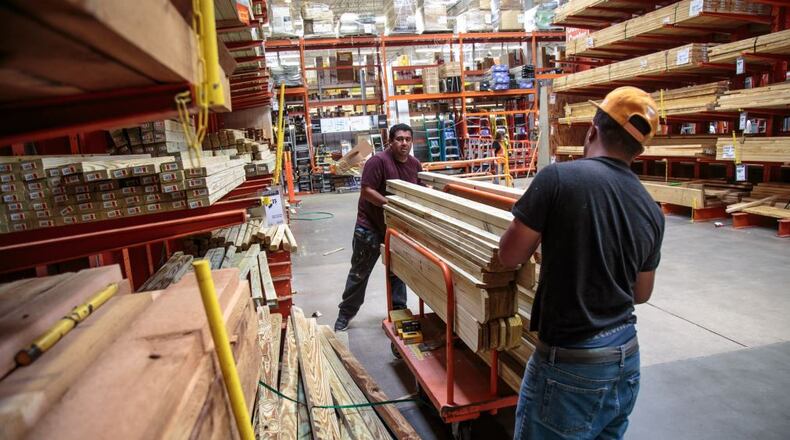The days of building a business by opening scores of stores each year are gone.
But unlike many of the chains making up retail – from Belk to Kmart, from Macy’s to Kohl’s – Home Depot isn’t closing bunches of them while struggling to stay profitable. Instead, the $95 billion-a-year company has turned to efficiency and strategy for growth.
Retail losses and store shutterings are a logical response to many years of building too many malls and retail outlets, Carol B. Tomé, Home Depot’s chief financial officer, said Tuesday. “Retail is over-stored.”
In the mid-1990s, there were 75,000 households for every large home improvement store, compared to about 30,000 households for every store now as the number of stores increased faster than the population, she said.
The Atlanta-based chain – which expanded dramatically for several decades after its founding in the late 1970s – has nearly 2,300 stores. At one point before the recession of 2007-09, Home Depot was averaging a new store every 36 hours.
“We will open one more store this quarter,” Tomé said. “We have enough stores.”
Tomé spoke with The Atlanta Journal-Constitution after Tuesday’s morning’s release of the company’s earnings report, which easily exceeded analyst expectations. For the quarter, the company reported:
— revenues of $25.03 billion, 8 percent higher than a year ago
— net income of $2.17 billion, 10 percent above last year
— an increase of 7.9 percent in same-store sales compared to last year.
— earnings of $1.84 a share.
Prospects are rosy, company officials said, predicting that sales during the current fiscal year will come in 6.3 percent higher than a year ago.
To build a bigger business without building stores means becoming more efficient with both the online and physical world of business, Tomé said. “The web site is becoming the front door of our stores. It is really an interconnected experience.”
More than 40 percent of online orders, for example, are picked up in a store, she said.
At the same time, Home Depot has been managing inventory better – trimming the time that items are being unproductively held, getting items to the stores quickly and selling them faster.
Generally, the more rapid the “inventory turn,” the better for the business, she said. “Really, it’s a measure of health.”
Home Depot emerged from the recent hurricane season with both increased revenues and higher costs. The chain had to temporarily close 236 stores in the path of one storm or another, but has also sold more storm-related materials.
The result was $282 million more in sales and $104 million more in expenses.
With storm related higher costs mostly in the rear-view mirror, Home Depot expects to see a surge of sales during the holiday season, Tomé said.
Appliances do well during the season, but also lights, decorations and various hardware-flavored gifts, said. The company also sells about 4 million Christmas trees, Tomé said.
“We sell more Christmas trees than anyone on the planet,” she said.
About the Author
Keep Reading
The Latest
Featured




